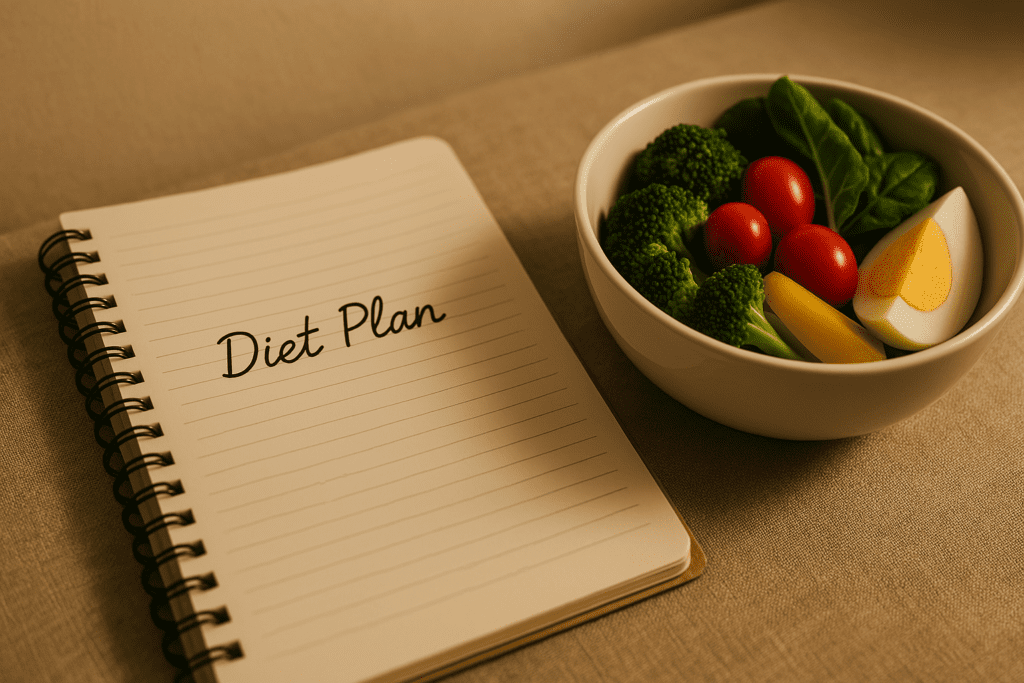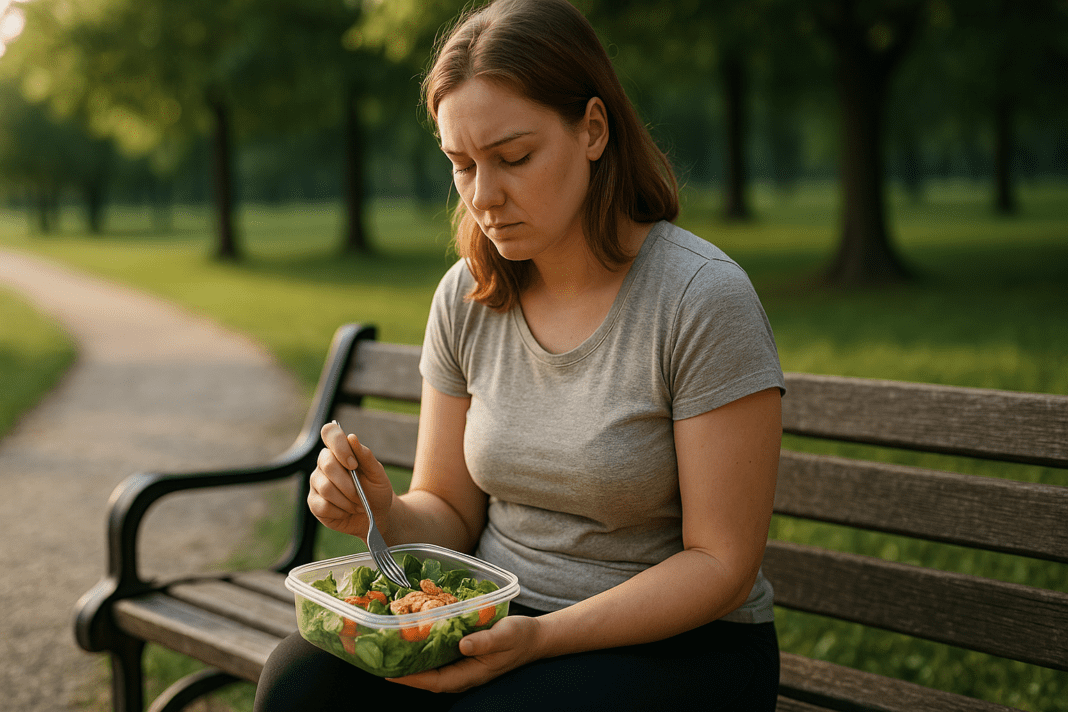In today’s fast-paced world, making health-conscious choices can feel overwhelming—especially when it comes to nutrition. Fad diets often promise rapid results but leave many people frustrated, fatigued, or right back where they started. In contrast, clean eating offers a refreshing, evidence-based approach that promotes long-term health, sustained weight loss, and a healthier relationship with food. When paired with an easy diet plan and a practical, free diet guide, clean eating becomes an accessible lifestyle rather than a restrictive regimen. This article offers an in-depth look into clean eating for weight loss, backed by nutritional science and designed for real life. Whether you’re just starting your health journey or looking to refine your routine, this guide can help you eat better, feel stronger, and build sustainable habits that last.
You may also like: Smart Eating on a Budget: How to Create Cheap Healthy Meals Without Sacrificing Nutrition
Understanding Clean Eating and Its Role in Weight Loss
Clean eating is more than a buzzword—it’s a nutritional philosophy that centers on whole, minimally processed foods. At its core, it encourages the consumption of fresh fruits and vegetables, whole grains, legumes, nuts, seeds, and lean proteins. Clean eating reduces reliance on refined sugars, trans fats, and artificial ingredients, which are often linked to inflammation, hormonal imbalances, and weight gain.
From a metabolic perspective, clean eating supports weight loss by stabilizing blood sugar levels and enhancing insulin sensitivity. Processed foods, particularly those high in refined carbohydrates and added sugars, often lead to energy crashes and cravings that drive overeating. In contrast, clean foods are nutrient-dense and high in fiber, which promotes satiety and reduces the likelihood of consuming excess calories throughout the day.
The benefits extend beyond the scale. Clean eating naturally improves digestive health, skin appearance, energy levels, and mental clarity. For individuals aiming to lose weight, these benefits act as positive reinforcement. Clean eating makes the journey feel rewarding—not punishing—while also building a more sustainable path forward.

Why Clean Eating Works Better Than Restrictive Diets
Traditional diets often rely on rigid rules, caloric restriction, or extreme food eliminations that are hard to maintain over time. While such approaches may lead to short-term weight loss, they rarely produce lasting results. Clean eating, by contrast, emphasizes abundance—of nutrients, flavor, and food variety—rather than restriction.
This lifestyle approach works for weight loss because it naturally encourages a calorie deficit without requiring obsessive tracking. Whole foods like vegetables, legumes, and whole grains are lower in calories per volume yet packed with nutrients. This means you can eat more, feel satisfied longer, and still consume fewer calories overall.
Moreover, clean eating supports the body’s natural metabolic processes. Thermogenesis, the energy expended through digestion, is greater when breaking down whole foods compared to processed foods. This slight increase in energy expenditure can contribute to gradual, consistent weight loss. Clean eating also helps regulate appetite hormones such as ghrelin and leptin, further aiding in hunger control and energy balance.
Perhaps most importantly, clean eating supports long-term habit formation. Unlike trendy diets that feel unsustainable, clean eating can easily become a lifelong practice. When it’s guided by an easy diet plan and supported by a reliable free diet guide, clean eating becomes not just doable, but enjoyable.

How to Build an Easy Diet That Aligns with Clean Eating Principles
Designing an easy diet plan grounded in clean eating doesn’t require fancy ingredients or hours in the kitchen. It starts with simplicity, balance, and routine. Begin each day with a breakfast that combines complex carbohydrates, fiber, and protein—like oatmeal topped with flaxseeds, almond butter, and berries. Meals like these stabilize blood sugar and reduce mid-morning energy slumps.
Lunch and dinner should center around plants, with clean protein sources added for satiety. Consider grain bowls with quinoa, black beans, roasted vegetables, and avocado; or leafy salads with grilled tofu, sweet potatoes, and a lemon-tahini dressing. These meals offer diversity in flavor and texture while keeping calories and additives in check.
Snacks can also be part of an easy diet. Options like raw nuts, air-popped popcorn, sliced fruit with nut butter, or hummus with cucumber are nutrient-dense and satisfying. Planning these snacks ahead of time helps you avoid reaching for processed or sugary foods when hunger strikes unexpectedly.
Portion awareness is key—but not in a restrictive way. Using smaller plates, slowing down while eating, and checking in with your hunger levels allows you to eat intuitively while maintaining a healthy calorie balance. When a free diet guide is used alongside your easy diet, it provides structure, helping you stay aligned with clean eating without guesswork or stress.

The Power of a Free Diet Guide for Clean Eating Success
Having a free diet guide at your fingertips is like having a personal nutrition coach on call. These guides are especially helpful for those new to clean eating or trying to shift from processed foods to more whole-food-based meals. A good free diet guide should include sample meal plans, grocery shopping lists, portion recommendations, and practical cooking tips.
Most importantly, a diet guide can help reduce decision fatigue. Knowing what to eat, when to eat it, and how to prepare it removes uncertainty and builds confidence. Many guides also offer swaps for common allergens or cultural preferences, ensuring that clean eating remains flexible and inclusive.
Look for a guide that includes not just meal plans but also education. Understanding why certain foods support weight loss—such as how fiber slows digestion or how healthy fats regulate hormones—helps reinforce commitment to your plan. The best guides empower rather than restrict, offering freedom through knowledge and preparation.
You can use a free diet guide as a weekly planner, revisiting it regularly to stay on track and identify areas where your habits are slipping. Over time, the guide becomes less of a crutch and more of a foundation—a toolkit you can return to whenever needed.
Common Pitfalls in Clean Eating (And How to Avoid Them)
As with any lifestyle change, clean eating can come with some misconceptions and missteps. One of the most common mistakes is equating “natural” with “healthy.” Many products marketed as clean or organic—such as granola bars or juices—are still high in sugar and offer little nutritional value. Reading labels and prioritizing whole ingredients over marketing claims is essential.
Another issue is underestimating portions of calorie-dense healthy foods. While nuts, seeds, avocado, and olive oil are clean, they’re also high in calories. Enjoying them in moderation supports weight loss, but consuming them excessively may counteract progress. Portion control, rather than restriction, allows you to benefit from these foods without unintentionally exceeding your energy needs.
Lastly, perfectionism can sabotage clean eating efforts. A single indulgent meal or off-plan snack doesn’t mean failure. Embracing an 80/20 mindset—where 80% of your meals follow clean eating guidelines and 20% allow for flexibility—creates a realistic, sustainable approach. This mindset fosters consistency and resilience, both of which are essential for lasting weight loss.
What the Research Says: Clean Eating and Effective Weight Management
A growing body of scientific literature supports clean eating as a powerful tool for weight loss and metabolic health. Studies show that diets high in unprocessed plant foods correlate with lower body weight, reduced risk of cardiovascular disease, and improved glucose control. Clean eating’s emphasis on fiber, antioxidants, and anti-inflammatory compounds plays a key role in these outcomes.
One study published in the journal Nutrients found that participants who followed a clean, whole-food diet experienced significant reductions in body fat and waist circumference, even without rigorous calorie tracking. Another randomized controlled trial compared clean eating with traditional low-fat diets and found that those on clean eating plans reported greater satisfaction, better adherence, and improved mood—all factors that support long-term success.
These findings reinforce that clean eating is not a gimmick but a scientifically valid approach to improving health and achieving weight goals. Clean foods nourish the body on a cellular level, supporting hormone regulation, gut microbiota diversity, and energy metabolism—all of which are essential for sustainable fat loss and overall vitality.
Affordability and Accessibility: Clean Eating on a Budget
Contrary to popular belief, clean eating doesn’t require expensive ingredients or gourmet recipes. With some strategic planning, it can be one of the most cost-effective ways to eat. Staples like beans, oats, brown rice, frozen vegetables, and canned tomatoes provide the building blocks of countless clean meals at a low cost per serving.
Buying in bulk, choosing generic brands, and shopping seasonally all contribute to savings. A bag of dried lentils, for instance, costs a fraction of pre-made meals and offers more nutrition. Embracing meal prep further cuts costs by reducing waste and minimizing takeout or impulse purchases.
Cooking at home, even a few times a week, allows you to control ingredients and save money. With guidance from a free diet guide, you can build a weekly shopping list that aligns with both your budget and your health goals. Clean eating is not only achievable—it’s also accessible to a wide range of lifestyles and income levels.
How to Stay Motivated and Make Clean Eating a Lasting Habit
Starting a clean eating plan is one thing—sustaining it is another. The key lies in building habits that are easy to maintain and aligned with your personal goals. Begin by setting achievable targets, like cooking at home three nights a week or adding one new vegetable to your meals. These small wins compound over time.
Accountability can also be helpful. Share your journey with friends, join a support group, or use a digital tracker to log meals and monitor progress. Keeping a journal or photo log of meals helps you reflect on your improvements and stay inspired.
Celebrate milestones along the way—whether it’s improved energy, better digestion, or fitting into an old pair of jeans. These victories remind you why you started and reinforce the value of sticking with your clean eating plan. As your confidence grows, clean eating stops feeling like a diet and becomes a part of who you are.
Frequently Asked Questions: Smart Clean Eating for Weight Loss — Insights Beyond the Basics
1. How can clean eating impact your mindset and emotional relationship with food during weight loss?
Clean eating fosters a more intuitive and respectful connection to food, helping individuals move away from guilt-driven or impulsive eating patterns. By focusing on food quality and how meals make you feel, it becomes easier to shift from emotional eating to mindful nourishment. Many people find that clean eating for weight loss not only supports their physical goals but also creates a sense of emotional balance and mental clarity. Unlike restrictive diets that can trigger cycles of deprivation and bingeing, an easy diet rooted in clean eating promotes freedom within structure. For those who follow a free diet guide, the presence of planning and flexibility can reduce anxiety around food decisions, helping to rebuild trust in the body’s signals and fostering long-term psychological resilience.
2. Is it possible to follow clean eating for weight loss when traveling or dining out frequently?
Absolutely—and with a few proactive strategies, it can be surprisingly manageable. When dining out, focus on meals that emphasize grilled, steamed, or roasted ingredients, and ask for sauces and dressings on the side. Many restaurants now offer customizable menu items, making it easier to stick to your easy diet without sacrificing social experiences. Using a free diet guide before travel can help you plan ahead by identifying clean snacks, locating health-conscious restaurants, or packing simple staples like nuts or protein powder. Clean eating for weight loss doesn’t mean you have to avoid restaurants altogether; it’s about making informed choices that align with your goals, even in less controlled environments. The key is staying flexible without losing sight of your nutritional intentions.
3. How do social and cultural food traditions fit into a clean eating lifestyle?
Clean eating isn’t about abandoning cultural food practices—it’s about honoring them with a fresh perspective. Many traditional dishes are rooted in whole, natural ingredients that align beautifully with the principles of clean eating for weight loss. With thoughtful adjustments—like reducing added oils, choosing whole grains, or increasing vegetable portions—you can stay true to your heritage while supporting your easy diet. A well-designed free diet guide should offer space for cultural variation, encouraging individuals to adapt rather than restrict. This culturally inclusive approach ensures clean eating remains sustainable, joyful, and personally meaningful, rather than isolating or restrictive.
4. Can clean eating support weight loss even without exercise?
Yes, although physical activity can accelerate results and enhance metabolic health, clean eating alone has a profound impact on weight regulation. Clean foods are naturally less calorie-dense and more nutrient-rich, making it easier to maintain an energy deficit without the need for excessive exercise. That said, incorporating light activity like walking or yoga can amplify benefits such as improved insulin sensitivity and reduced inflammation. If you’re using a free diet guide, you may notice suggestions for movement as part of an overall wellness framework, but the core focus remains on nutrition. An easy diet based on clean eating supports weight loss at the foundational level, especially when it replaces processed, high-sugar foods with balanced whole meals.
5. What role does sleep play in maximizing the effects of clean eating for weight loss?
Sleep quality has a powerful influence on appetite regulation, energy metabolism, and food choices. Insufficient sleep can disrupt hormones like leptin and ghrelin, increasing cravings and leading to overeating—especially of processed or sugary foods. Clean eating for weight loss works best when paired with consistent, restorative sleep patterns, as the body is more likely to respond to nutritional cues when well-rested. A free diet guide may not always highlight sleep, but many now include lifestyle tips that acknowledge this crucial connection. By combining clean eating with healthy sleep hygiene, you’re reinforcing the body’s ability to burn fat efficiently and maintain balanced energy levels throughout the day.
6. How can someone stay consistent with an easy diet based on clean eating during stressful times?
Stress often leads to comfort eating or reliance on fast, processed foods—yet clean eating can become a stress-reducing anchor rather than an added burden. The key is preparation and flexibility. Prepping simple meals ahead of time, keeping easy-to-assemble ingredients on hand, and using a free diet guide as a grounding resource can help maintain structure. Clean eating for weight loss doesn’t require perfection during high-stress periods; even maintaining a baseline of nutritious meals can prevent setbacks. Small, consistent habits—like choosing fruit over chips or cooking one homemade meal per day—can provide a sense of control and stability amid life’s unpredictability.
7. What are some emerging innovations making clean eating more accessible for busy individuals?
Technology and food delivery services are rapidly evolving to support clean eating lifestyles. From smart meal-prep apps to personalized nutrition plans, it’s now easier than ever to follow an easy diet tailored to your needs. Many platforms offer a free diet guide as part of their subscription or onboarding process, simplifying the journey. Additionally, grocery delivery services now allow you to shop by dietary preference, which helps busy users stick to clean eating for weight loss goals without impulse buying or relying on convenience foods. These innovations reflect a broader cultural shift toward accessibility and empowerment, helping more people integrate healthy habits into their everyday lives.
8. How can someone break through a weight loss plateau while following clean eating?
Hitting a plateau is common—even when you’re doing everything right. To break through, start by reassessing portion sizes and food variety. The body adapts to routines, so shifting your macronutrient ratios slightly or introducing new types of fiber or protein can stimulate progress. Sometimes an easy diet becomes too easy, creating unconscious habits like snacking or eating mindlessly, so it’s helpful to revisit your free diet guide and recalibrate. Additionally, improving hydration, managing stress, and tweaking sleep routines can reignite progress. Clean eating for weight loss is a dynamic process, and plateaus are a signal to refine—not abandon—your approach.
9. Are there specific types of clean foods that enhance gut health and support weight loss synergistically?
Absolutely. Foods like fermented vegetables, kefir, kimchi, miso, and fiber-rich plants such as asparagus, garlic, and legumes act as prebiotics and probiotics, feeding healthy gut bacteria. A flourishing gut microbiome can improve nutrient absorption, reduce inflammation, and regulate fat storage. Many people following an easy diet overlook the microbiome, but incorporating these foods can accelerate fat loss and improve digestion. A robust free diet guide may include fermented and high-fiber options as part of a weekly plan. When clean eating for weight loss also supports gut health, the benefits multiply—enhancing everything from immunity to mental clarity.
10. What are the long-term benefits of clean eating beyond just weight loss?
Clean eating offers far-reaching benefits that go well beyond body weight. Over time, it reduces the risk of chronic diseases like Type 2 diabetes, heart disease, and certain cancers due to its anti-inflammatory, antioxidant-rich nature. It also improves cognitive function, skin health, hormonal balance, and emotional stability. An easy diet that incorporates whole foods consistently lays the groundwork for a longer, healthier life. For many, a free diet guide serves as the initial steppingstone—but over time, clean eating becomes a seamless part of daily life. Ultimately, clean eating for weight loss evolves into clean eating for vitality, purpose, and overall well-being.
Conclusion: Embrace Clean Eating and Unlock Sustainable Weight Loss with an Easy Diet and Free Diet Guide
Clean eating for weight loss doesn’t require perfection, expensive superfoods, or complicated rules. It’s about making consistent, thoughtful choices that prioritize whole, nourishing foods. With the support of an easy diet plan and a flexible, evidence-based free diet guide, anyone can transition into a cleaner, healthier lifestyle without feeling overwhelmed or deprived.
This approach respects both the science of nutrition and the realities of modern life. It offers a sustainable way to lose weight, feel better, and improve overall well-being—without sacrificing enjoyment or convenience. Whether you’re just beginning or looking to refine your habits, clean eating provides the tools, mindset, and flexibility to help you thrive.
As you take your first steps, remember: every meal is a chance to nourish your body, and every choice you make builds momentum. Trust the process, stay curious, and let clean eating become the foundation for a lifetime of vibrant health.
healthy meal planning, plant-based nutrition tips, whole food lifestyle, sugar detox strategies, mindful weight management, portion control techniques, anti-inflammatory diet plan, fiber-rich foods for digestion, metabolism-boosting meals, gut health support, low-glycemic eating, sustainable fat loss, real food diet ideas, hormone-balancing meals, blood sugar regulation tips, affordable healthy eating, nutrient-dense snacks, weight loss mindset shifts, clean cooking habits, balanced daily nutrition
Further Reading:
Clean-Eating Meal Plan for Beginners, Created by a Dietitian
24 Clean Eating Tips to Lose Weight and Feel Great
A Low Carb Meal Plan and Menu to Improve Your Health
Disclaimer
The information contained in this article is provided for general informational purposes only and is not intended to serve as medical, legal, or professional advice. While NewsHealthWatch strives to present accurate, up-to-date, and reliable content, no warranty or guarantee, expressed or implied, is made regarding the completeness, accuracy, or adequacy of the information provided. Readers are strongly advised to seek the guidance of a qualified healthcare provider or other relevant professionals before acting on any information contained in this article. NewsHealthWatch, its authors, editors, and contributors expressly disclaim any liability for any damages, losses, or consequences arising directly or indirectly from the use, interpretation, or reliance on any information presented herein. The views and opinions expressed in this article are those of the author(s) and do not necessarily reflect the official policies or positions of NewsHealthWatch.

